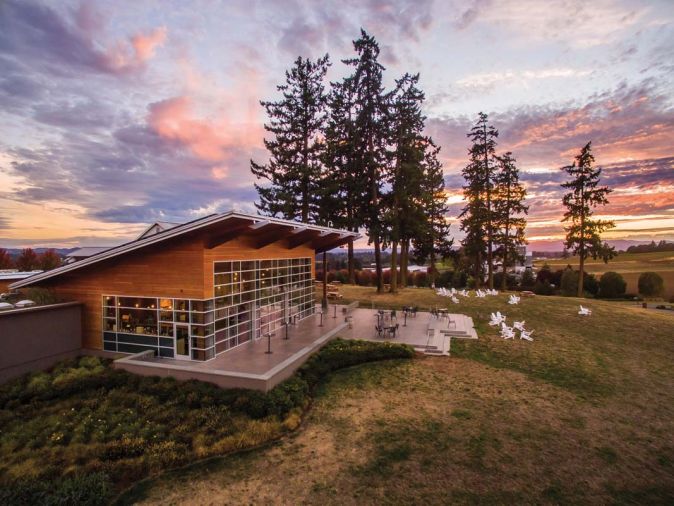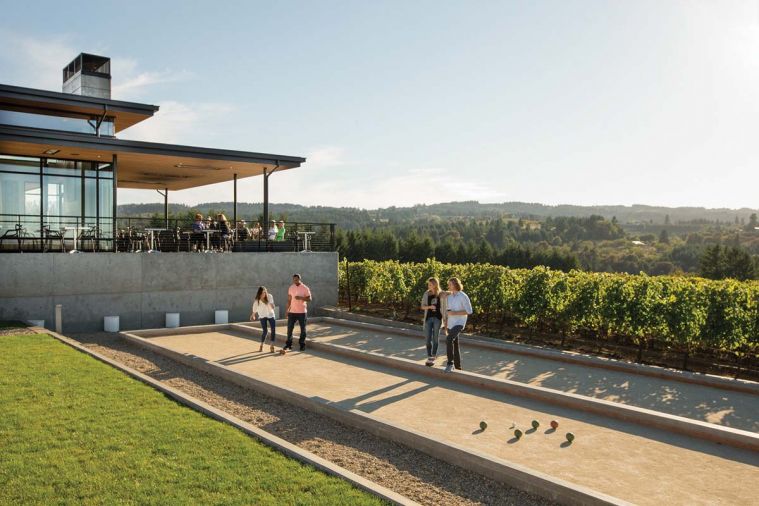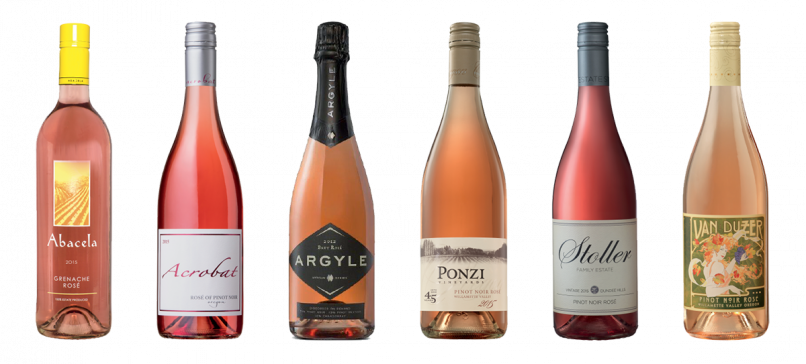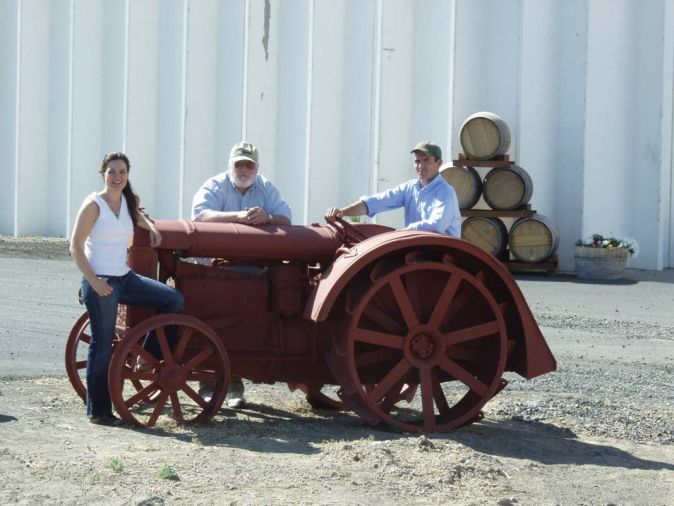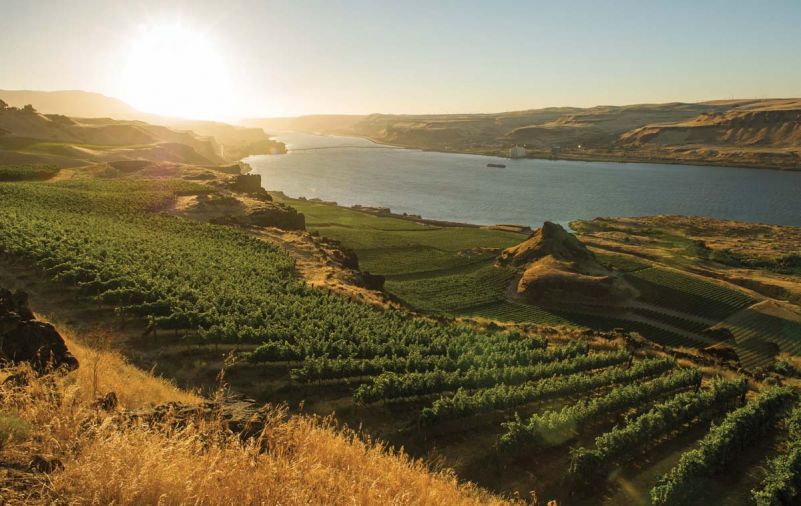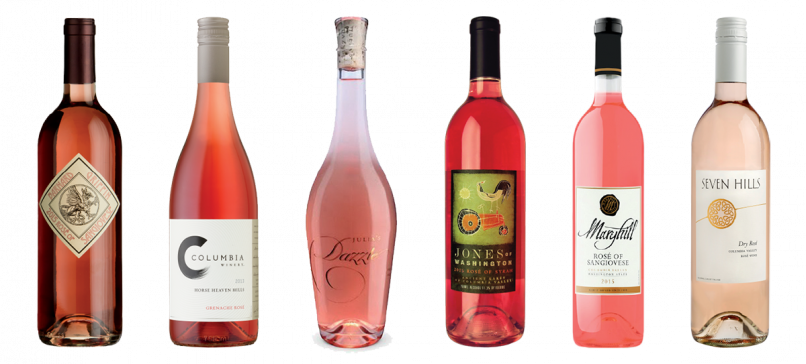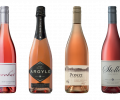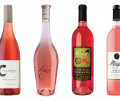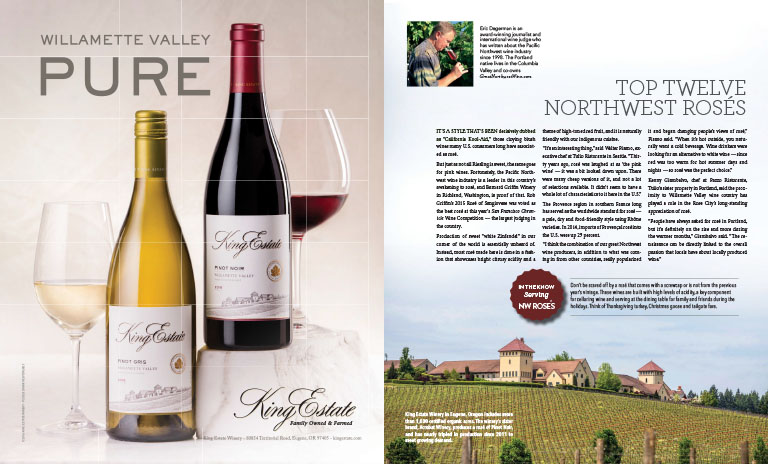It’s a style that’s been derisively dubbed as “California Kool-Aid,” those cloying blush wines many U.S. consumers long have associated as rosé.
But just as not all Riesling is sweet, the same goes for pink wines. Fortunately, the Pacific Northwest wine industry is a leader in this country’s awakening to rosé, and Barnard Griffin Winery in Richland, Washington, is proof of that. Rob Griffin’s 2015 Rosé of Sangiovese was voted as the best rosé at this year’s San Francisco Chronicle Wine Competition — the largest judging in the country.
Production of sweet “white Zinfandel” in our corner of the world is essentially unheard of. Instead, most rosé made here is done in a fashion that showcases bright citrusy acidity and a theme of high-toned red fruit, and it is naturally friendly with our indigenous cuisine.
“It’s an interesting thing,” said Walter Pisano, executive chef at Tulio Ristorante in Seattle. “Thirty years ago, rosé was laughed at as ‘the pink wine’ — it was a bit looked down upon. There were many cheap versions of it, and not a lot of selections available. It didn’t seem to have a whole lot of characteristics to it here in the U.S.”
The Provence region in southern France long has served as the worldwide standard for rosé — a pale, dry and food-friendly style using Rhône varieties. In 2014, imports of Provençal rosé into the U.S. were up 29 percent.
“I think the combination of our great Northwest wine producers, in addition to what was coming in from other countries, really popularized it and began changing people’s views of rosé,” Pisano said. “When it’s hot outside, you naturally want a cold beverage. Wine drinkers were looking for an alternative to white wine — since red was too warm for hot summer days and nights — so rosé was the perfect choice.”
Kenny Giambalvo, chef at Pazzo Ristorante, Tulio’s sister property in Portland, said the proximity to Willamette Valley wine country has played a role in the Rose City’s long-standing appreciation of rosé.
“People have always asked for rosé in Portland, but it’s definitely on the rise and more during the warmer months,” Giambalvo said. “The renaissance can be directly linked to the overall passion that locals have about locally produced wine.”
VARIOUS METHODS, DIFFERENT VARIETIES
Winemakers in the Northwest and around the world approach rosé from different angles, using a variety of grapes and with little to no influence from oak.
Perhaps the most common winemaking method is when red-skinned grapes are left to macerate within the juice. The longer the skin contact, the more pigment is extracted, creating more color in what starts out as white juice from red grapes. Typically, the time frame of maceration ranges from two to 20 hours. Extended maceration in red table wine spans several weeks.
There’s also saignée, a French word that translates to “bleed.” In the early stage of making red table wine, some of the first pressing of juice is drained or “bled off” in order to concentrate flavors in the red wine. That pink juice is then fermented into a rosé.
Sparkling rosé often is created by blending Chardonnay with Pinot Noir and sometimes Pinot Meunier. Some forms of still rosé also are made by adding red wine to a base of white wine, but these examples tend to show a lack of precision.
Rosé in the Northwest is produced with a number of grape varieties, but winemakers tend to favor Pinot Noir, Sangiovese, Cabernet Franc and Rhône Valley grapes such as Syrah, Grenache, Mourvèdre and Cinsault.
Rob Griffin’s approach can serve as a template. He starts with Sangiovese, capitalizing on the Italian grape’s naturally scintillating acidity and allowing him to present it as “electric pink” — his description of its appearance in glass. “There’s nothing phony in the color.”
He also works closely with the same vineyards in the Columbia Valley vintage after vintage.
“We know what we want to do before we do it,” Griffin says. “Most rosés are made as an afterthought.”
It also helps that Sangiovese is one of the wine world’s most prolific producers, allowing the vines to hang eight tons of grapes to the acre. High-end Pinot Noir often is cropped at two tons per acre, but rosé producers seek bright acidity, not sugar development. That higher crop load works out well for the farmer, allows Griffin higher levels of production and keeps the price ($14) affordable for consumers.
Traditionally, he releases his rosé on Valentine’s Day with spring just around the corner.
“I think the Pacific Northwest winemakers have realized that they can (excel) with rosé, which can be an afterthought in most wineries,” Giambalvo said. “And consumers are better educated in wine knowledge, which means more appreciation for the endless varieties.”
These two Kimpton Hotel and Restaurant properties are long-standing supporters of the Northwest wine industry. Tulio is within Hotel Vintage Seattle, and Pazzo is part of Hotel Vintage Portland. Each boutique hotel offers educational wine tastings nightly and features rooms named after wineries in their respective states.
THINK PINK, THINK PASTA, CHICKEN, SEAFOOD
Regardless of how they get there, the goal for each winemaker is to achieve balance with the presentation of fruit, mouth feel and residual sugar vs. acidity. The structure, lower alcohol and versatility of a well-crafted rosé shines at the dining table as well as the backyard deck.
“I look for a crisp balance — not too dry, not too sweet with a little acidity to it,” Pisano said. “Not too thin or light, either.”
Diners and chefs at Pazzo and Tulio are asking for rosé that’s not completely bone dry. That means the residual sugar will between 0.4 and 1 percent.
“It should be crisp and fruit forward with subtle sugar on the finish,” Giambalvo said. “Good balance is key.”
And while the Portland chef finds himself naturally gravitating toward rosé made with Pinot Noir, Pisano in Seattle prefers his pink from Grenache.
“The ultimate rosé is balanced with some character,” Pisano said.
At Tulio, Pisano said the Orecchiette, a pasta dish with Italian sausage, tomato sauce and Parmigiano Reggiano cheese, is a top recommendation to pair with a bottle of rosé.
“A little spice from the sausage and the bitterness of the rapini (Italian broccoli) complement the light crispness of the rosé,” Pisano said. “The nuttiness of the Parmesan Reggiano balances it all out. For some alternate ideas, try it with fish, chicken or seafood. Specifically, I recommend crudo.”
Giambalvo suggests grilled seafood with higher levels of fish oils, duck and vegetable based pasta dishes for those who come to Pazzo thinking pink.
“Wine savvy diners know about rosé and will ask without much coaching from our service staff,” he said.
More restaurants are helping to enlighten their guests, but there also is a place for “California Kool-Aid” as a soft approach and gateway for new wine consumers. After all, didn’t most of us who appreciate a healthy bowl of granola, bran or Wheaties for breakfast start out with Frosted Flakes?
RECIPES
ORECCHIETTE “LITTLE EARS” PASTA WITH SAUSAGE, ITALIAN BROCCOLI, TOMATO SAUCE & PARMIGIANO REGGIANO
Recipe by Executive Chef Walter Pisano, Tulio Ristorante, Seattle
SERVES 4
1 lb Orecchiette pasta
2 cups Ground Pork sausage
1 ½ cups Rapini (Italian broccoli} washed & cut into ½ pieces
3 Whole, fresh garlic cloves
1/8 tsp Crushed red chili flake
14 oz. Imported Italian tomatoes “San Marzano”
5 Tbsp Virgin olive oil
½ cup Parmesan Reggiano grated
BASE TOMATO SAUCE
Pass whole tomatoes through a food mill.* Set aside. In a heavy bottom saucepot, begin to heat 2 tablespoons of olive oil slowly. Add the garlic cloves to hot oil and toast until garlic is golden brown. Add the passed tomatoes (be careful not to splatter yourself). Turn the sauce down to a simmer & cook for 40 minutes.
REMAINING SAUCE PROCEDURE
Press ground sausage into a thin patty. In a heavy bottom saucepan, heat 1 tablespoon of olive oil and brown the sausage and chili flake. When the sausage is half cooked, add the broccoli and sauté till tender (approximately 3 minutes). Add the tomato sauce cook for another 2 minutes. Turn off the sauce and set aside.
PASTA COOKING PROCEDURE
Start a heavy bottom saucepot with 6 quarts salted water. Drop the pasta into the water. Blanch the pasta until al dente (approximately 12-14 minutes), stirring occasionally to prevent pasta from sticking. When the pasta is cooked, drain using a colander (don’t rinse the pasta) drain well and add to the sauce. Toss well and serve with grated Parmesan Reggiano.
* If you don’t have a food mill, remove as many seeds as possible and run tomatoes in Cuisinart to a pulp/puree.
POACHED WILD GULF PRAWN & CELERY SALAD
Recipe by Chef Kenny Giambalvo, Pazzo Ristorante, Portland
SERVES 4
FOR THE PRAWNS
12 pieces wild white Mexican shrimp 16/20 count
½ gal water
1 onion sliced medium
2 cloves garlic
1 rib celery sliced medium
2 Bay leafs
2 sprigs Thyme
1 Tbsp Black peppercorns
½ cup Sea salt
Juice of two lemons
Combine all of the ingredients (except the shrimp) in a sauce pot and bring to a simmer. Allow to simmer for 10 minutes
Add the shrimp and bring back to a simmer. Cook for 1 minute more after the water reaches a full simmer.
Strain the shrimp and spread out on a sheet pan to cool. The pan can be placed in the refrigerator to cool the shrimp faster.
Once cooled, discard the vegetables. Peel and devein the shrimp. Slice each shrimp in half, length wise. Set aside in a tightly sealed container in the refrigerator until needed.
Serve the prawns whole and shell-on, drizzled with the garlic-lemon oil and garnished with the green onions, sumac, and smoked sea salt to taste.
FOR THE DRESSING
1 shallot chopped fine
1 clove garlic chopped fine
1 tsp Dijon mustard
Juice and zest of one lemon
Juice and zest of one lime
1 oz pasteurized egg yolk
Approx. ½ cup grapeseed oil
Approx. ½ cup extra virgin olive oil
Salt and fresh ground black pepper
Place the shallots, garlic, mustard, egg yolk, lemon and lime juice and zest in a food processor or blender.
While the motor is running, slowly add the grapeseed and olive oil until blended and emulsified.
Adjust seasoning and keep refrigerated in a sealed container until needed.
FOR THE SALAD
Poached and sliced shrimp 3 ribs celery
1 shallot sliced into 1/8” thick rounds
2 Tbsp red wine vinegar
2 bunches watercress, stems trimmed
1 bunch mint leaves only
Approx. 4 oz citrus dressing
Salt and fresh ground black pepper
Combine the sliced shallot and vinegar in a small bowl. Sprinkle with a little salt and let sit for 1 hour prior to serving the salad.
Slice the celery on a bias about 1/8” thick.
Bring a small pot of salted water to a hard boil. Add the celery and bring back to one boil.
Strain the celery and shock immediately in an ice bath.
In a large mixing bowl, combine the shrimp, celery, watercress, mint leaves and citrus dressing.
Toss together until evenly coated with dressing.
Arrange the salad evenly divided on four salad plates.
Drain the vinegar from the shallots and garnish each salad with a few rings of the pickled shallot.
Serve immediately.

